19 Hardy Perennials That Promise Unstoppable Color Every Year
Add some flower power to your garden year after year with these tough-as-nails hardy perennials.
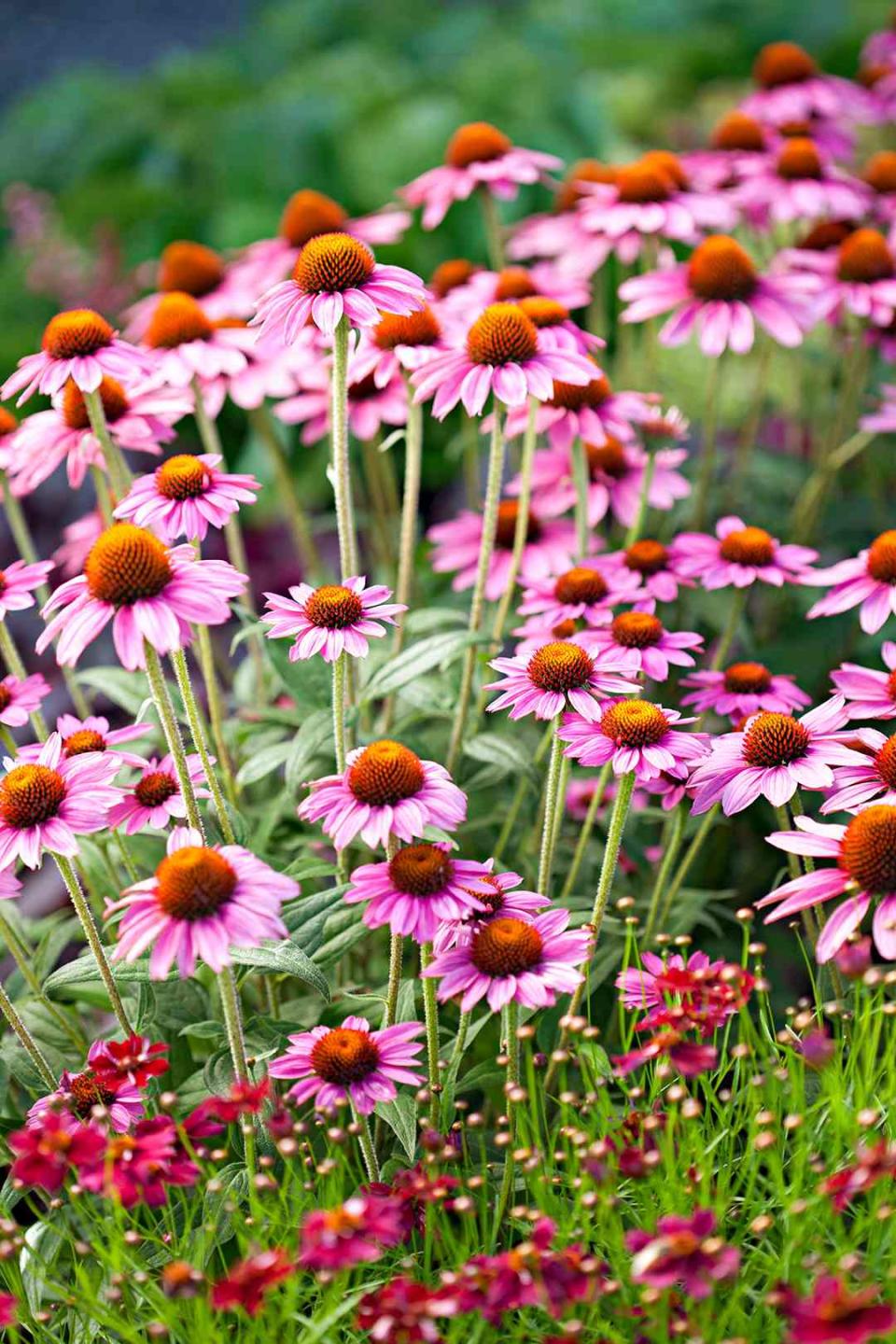
Reviewed by David McKinney
When you need reliable and low-maintenance plants that offer some serious flower power, these tough-as-nails hardy perennials are the way to go. Each of these plants can tolerate challenging conditions such as drought, poor soil, and harsh winters, then come back with beautiful blooms every year.
Daylily
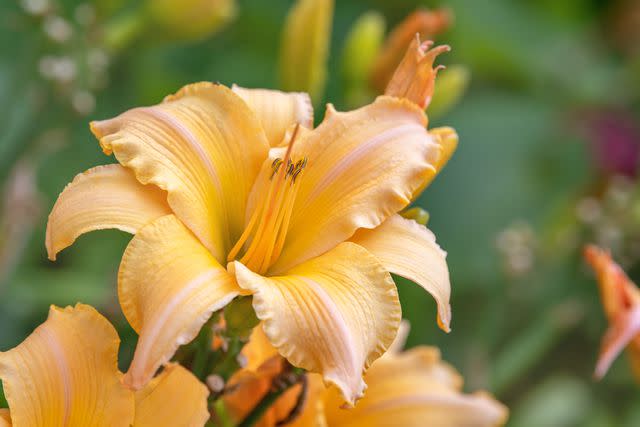
BHG / Evgeniya Vlasova
Practically indestructible, daylilies (Hemerocallis) will flower profusely in almost any sunny spot. They're drought-tolerant and insect-resistant and offer a wide range of colors and bicolors. Daylilies are also available in early-, mid-, and late-season bloomers. Plant a few of each in your garden for an all-season flower show. Or, grow daylily varieties that are repeat bloomers, flowering from spring until fall.
These hardy perennials eventually form large clumps that should be divided every three to four years to keep them blooming their best.
Growing Conditions: Full sun to part shade and well-drained soil
Size: Up to 5 feet tall
Zones: 3-10
Barrenwort
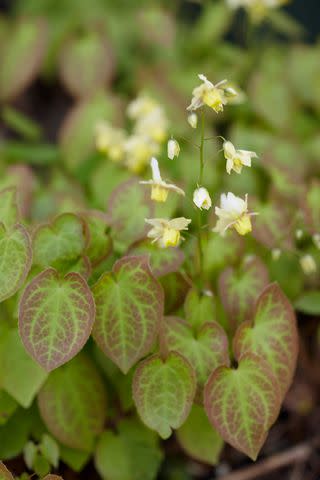
One of the best shade perennials, barrenwort (Epimedium spp.) is a real garden workhorse. This hardy groundcover offers both colorful foliage and flowers. It's also highly drought resistant, making it an ideal choice for shady locations with dry soil. Depending on the variety you grow and your region, the plants may also remain evergreen through the winter. Epimedium spreads slowly, gradually carpeting your garden with color.
Growing Conditions: Full to part shade and well-drained soil
Size: Up to 12 inches tall
Zones: 4-8
Related:Use Evergreens to Make an Impact
Tickseed
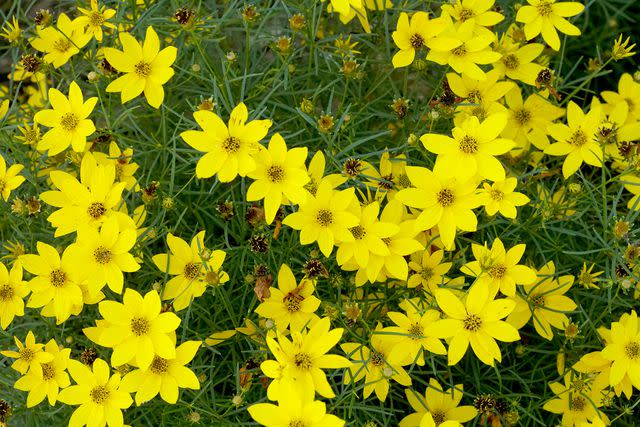
Hot, dry weather won't stop tickseed (Coreopsis spp.) from flowering all summer. This American native is one of the most reliable perennials you can grow. The plants produce large quantities of yellow, orange, pink, white, red, or bicolored blooms that dance on wiry stems every time the wind blows. They also have few insect or disease problems. Foliage varies between species and can be either threadlike or broad. To promote even more flowers, remove faded blooms as they appear.
Growing Conditions: Full sun and well-drained soil
Size: Up to 4 feet tall
Zones: 3-8
Russian Sage
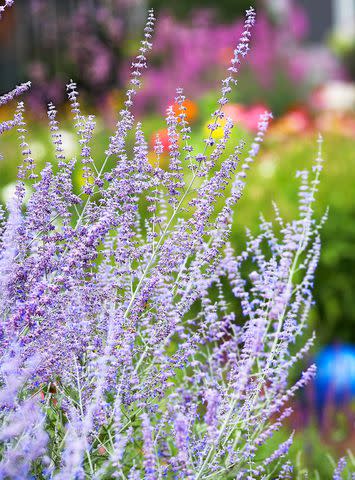
Add a burst of color to your late summer and fall garden with Russian sage (Perovskia atriplicifolia). This tough-as-nails plant is native to central Asia and can perform in hot, dry conditions. Its eye-popping bluish-purple flowers appear in mid to late summer and retain their color for weeks. Paired with the plant's fragrant, silvery foliage, Russian sage is a must-have for your garden. Although Russian sage grows 3 to 5 feet tall, dwarf forms are more compact, reaching 3 feet tall.
Growing Conditions: Full sun and well-drained soil
Size: Up to 5 feet tall
Zones: 4-9
Hellebore
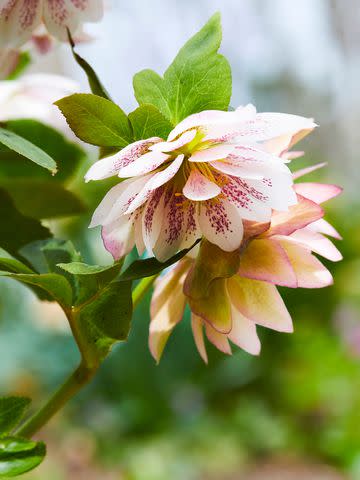
Just when you think winter will never end, the spirit-lifting flowers of hellebores burst into bloom. Often called Lenten or Christmas rose because of their early-flowering season, hellebores excel as a perennial flower for shade where their nodding pink, white, rose, green, purple, yellow, spotted, or bicolored blooms bring welcome color to dark corners of the landscape. They also make perfect companions for spring-flowering bulbs such as Narcissus and Squill. Hellebores are also deer and rabbit resistant.
Growing Conditions: Full to part shade and moist, well-drained soil
Size: Up to 2 feet tall
Zones: 4-9
Related:19 Rabbit and Deer-Resistant Container Plants for Your Garden
Sedum
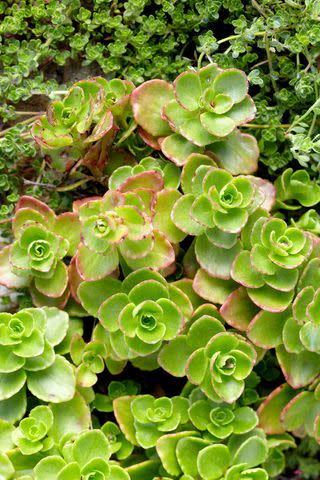
Put sedums on the top of your shopping list if you're looking for a hardy perennial that requires almost no care. These scrappy plants come in various shapes, sizes, and colors and won't succumb to heat, drought, winter cold, or insects. One popular variety is called Dragon's Blood sedum. This fast-growing creeper has pretty red-and-green foliage, making it an excellent groundcover for sloping sites. Sedums prefer sunny locations, but they're also part-sun perennials.
Growing Conditions: Full sun to part shade and well-drained soil
Size: Up to 6 inches tall
Zones: 3-10
Baptisia
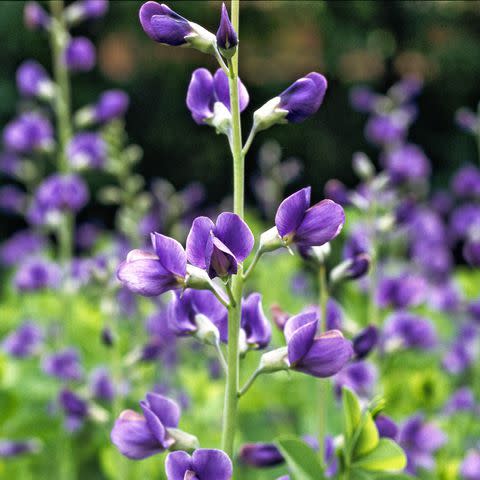
Once established, Baptisia, also known as false indigo, can live for decades. In fact, in the Better Homes & Gardens Test Garden®, several specimens have bloomed reliably every spring since they were planted in the 1950s. Baptisia is a large, shrub-like perennial that produces graceful stalks of blue, white, purple, or yellow flowers, followed by large seedpods filled with seeds. It has pretty, blue-green, pea-like foliage that looks terrific even when the plants are not in bloom.
Growing Conditions: Full sun to part shade and well-drained soil
Size: Up to 4 feet tall
Zones: 3-8
Coneflower
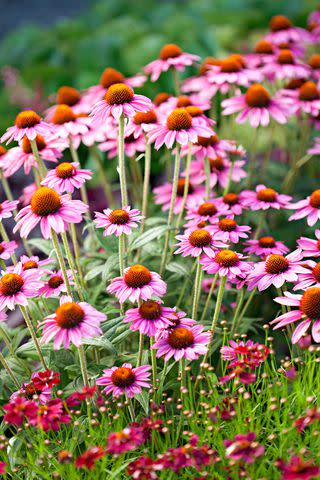
Native to the American prairie, coneflowers are one of the most widely grown and hybridized perennials in the country. In addition to single-flowering forms, you can grow doubles and even triple-petal-packed varieties (note that petal-heavy flowers aren't as good for pollinators). Colors vary from the traditional purplish-pink to white, orange, yellow, and red. They bloom from early summer to fall and attract birds and butterflies.
Growing Conditions: Full sun and well-drained soil
Size: Up to 3 feet tall
Zones: 3-9
Asiatic Lily
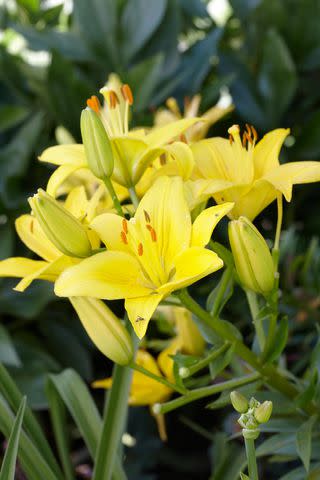
The hardiest of all the lilies, Asiatics are almost foolproof. They grow quickly from bulbs planted in the fall or early spring and develop gorgeous, upward-facing flowers in a wide range of colors and bicolors. Bloom time varies by variety but most put on their biggest flower show in early to midsummer. Asiatic lilies also multiply fast, so you can dig and divide them every few years and spread them to other sunny spots in your garden. Some are also lightly fragrant.
Growing Conditions: Full sun to part shade and well-drained soil
Size: Up to 4 feet tall
Zones: 3-10
Related:This Beautiful Heat-Loving Garden Plan Thrives in the Hot Sun
Hosta
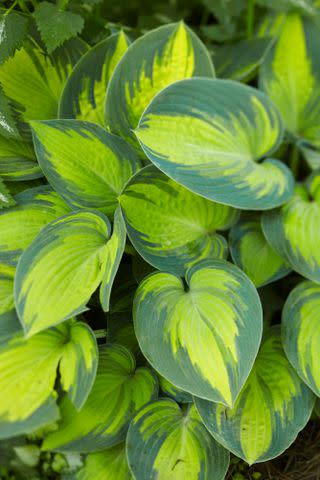
Blaine Moats
If you like variety, you can't go wrong with hostas. These shade dwellers are available in hundreds of different shapes, sizes, and colors, including giants that can grow 4 feet tall and dwarves that top out at 4 inches. Prized for their colorful foliage, hostas also produce lovely wands of blue, white, or lavender flowers during the summer (flowering time varies by variety). These hardy perennials are a snap to care for and can be dug and divided to produce more plants whenever you need them.
Growing Conditions: Part to full shade and moist, well-drained soil
Size: Up to 4 feet tall, depending on variety
Zones: 3-9
Peony
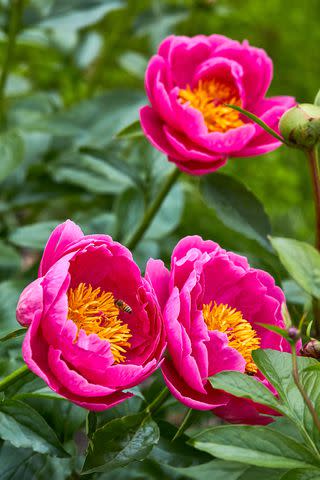
Make a long-term investment in your garden with peonies. These gorgeous sun lovers will bloom reliably for decades, getting bigger and better every year. Peonies are available in a variety of colors and flower forms, including singles, doubles, and semi-doubles. The flowers are also delightfully fragrant, making them an ideal choice for fresh-cut bouquets. Although they vary slightly by variety, most peonies bloom in May and June, but even after they flower, their finely cut foliage provides interest in the flower border.
Growing Conditions: Full sun to part shade and well-drained soil
Size: Up to 7 feet tall, depending on variety
Zones: 3-8
Related:5 Techniques for How to Keep Cut Peonies Fresh Longer
Catmint
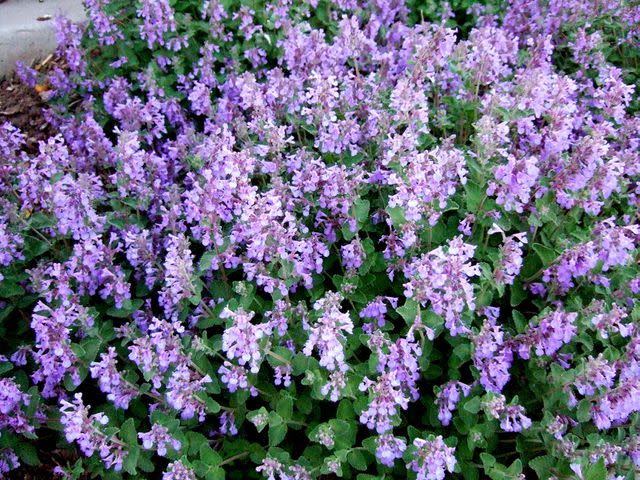
When in bloom during spring and summer, catmint (Nepeta spp.) becomes the star of the garden. The whole plant becomes covered with wands of rich blue flowers that stand up to heat and drought. Plus, after they bloom, you can shear the plant back by a third of its height, and it'll bloom again in the late summer and early fall. Taller varieties that reach 3 feet high make excellent planting partners for roses, peonies, or ornamental grasses. Place shorter catmints that grow just 12 inches tall at the edge of your garden beds.
Growing Conditions: Full sun to part shade and well-drained soil
Size: Up to 3 feet tall, depending on variety
Zones: 3-9
Cranesbill
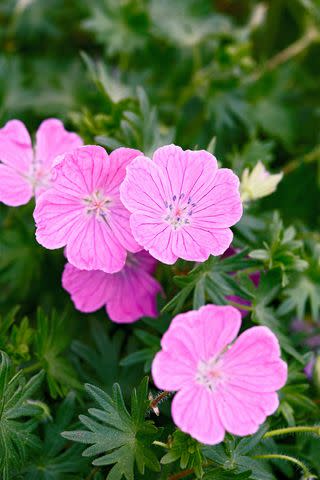
Named for the shape of its seeds, cranesbill is also called perennial geranium. It produces white, pink, blue, or light purple flowers on slender, arching stems from late spring until fall. Most varieties also have mottled or veined leaves that add to the color show even when the plants aren't in bloom, especially in fall when the foliage flushes red. The low-growing plants will spread to carpet an area.
Growing Conditions: Full sun to part shade and well-drained soil
Size: Up to 2 feet tall
Zones: 5-9
Related:10 Easy-Care Groundcovers That Thrive in the Toughest Spots
Blazing Star
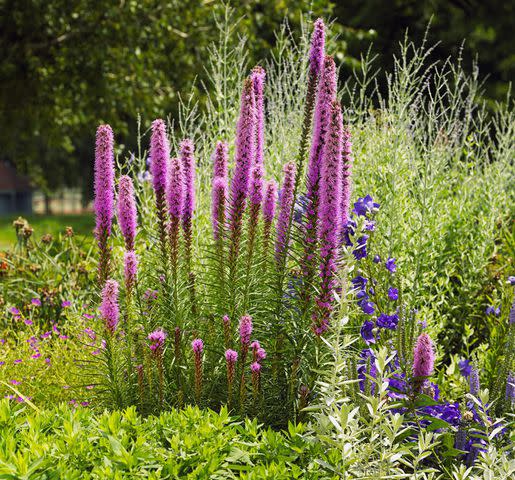
Growing wild in the American prairies, blazing star (Liatris spp.) is also a top pick for hot, sunny gardens. The plants don't mind heat and drought and come in pink, purple, or white flowering varieties. Blazing star forms a clump of narrow leaves topped in mid to late summer by 2-foot-tall spikes of bloom. This striking perennial is also a favorite with butterflies, bees, and other pollinators.
Growing Conditions: Full sun and well-drained soil
Size: Up to 5 feet tall
Zones: 3-9
Garden Phlox
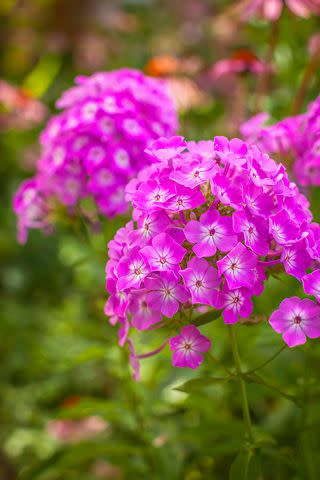
Every flower border should contain a generous helping of garden phlox. These classic perennials produce large, fragrant flower heads from mid-summer to fall. You can find varieties with pink, red, purple, white, or bicolor blooms, and some also offer variegated foliage. In humid climates, look for mildew-resistant types. Garden phlox make excellent companions for roses, coneflower, and lilies.
Growing Conditions: Full sun or part sun and well-drained soil
Size: Up to 5 feet tall
Zones: 4-8
Oriental Lily
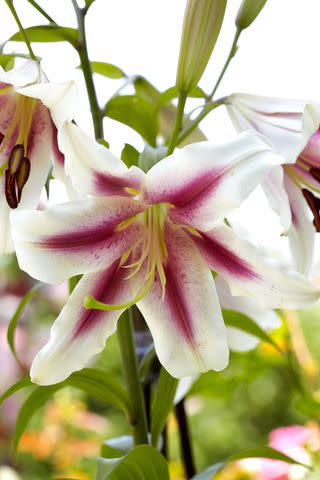
Add color and fragrance to your flower borders with Oriental lilies (Lilium spp.). These spectacular plants produce bouquets of richly scented flowers from mid to late summer. Colors include pink, rose, white, pale orange, and cream. Many are also speckled and striped.
Oriental lilies are easy to grow from bulbs planted in the spring or fall. Some taller varieties might require support in windy locations, so set stakes in the ground while the plants are young. The exquisite blooms make excellent cut flowers but remove the stamens to avoid staining your clothes. Dig and divide the bulbs every few years in the fall to keep the plants vigorous.
Growing Conditions: Full sun to part shade and well-drained soil
Size: Up to 6 feet tall
Zones: 4-8
Japanese Anemone
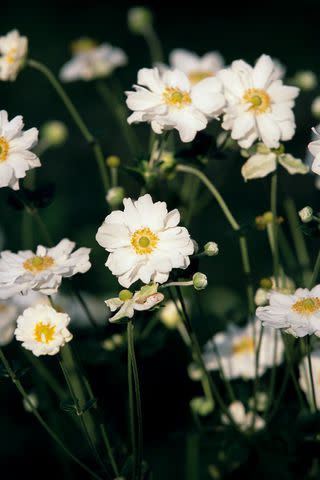
Add a shot of color to your fall garden with Japanese anemones (Anemone spp.). These cheerful flowers bloom mid to late summer and stay colorful through early autumn. The single, pure pink flowers appear on wiry, 2-foot-tall stems high above the plant's dark green foliage. This pretty perennial can be slow to take hold, but with time it will form dense clumps and can naturalize an area.
Growing Conditions: Full sun to part shade with rich, moist, well-drained soil
Size: Up to 3 feet tall
Zones: 4-8
Culver's Root
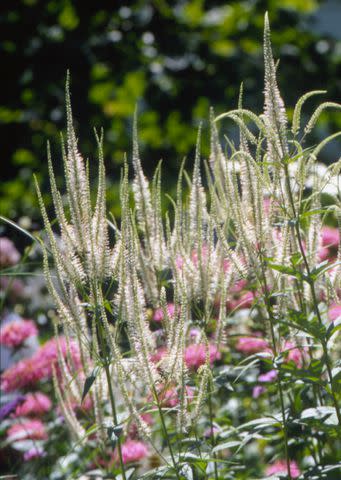
A native of the American prairie, culver's root (Veronicastrum virginicum) develops bold candelabras of white, pink, or light purple flowers all summer. The plant also has pretty, finely cut foliage that keeps it looking good even when it's not blooming. In addition, Culver's root is attractive to butterflies and other pollinators.
Growing Conditions: Full to part sun and moist, well-drained soil
Size: Up to 7 feet tall
Zones: 3-8
Related:This Prairie Garden Design Brings the Midwest to Your Backyard
Moss Phlox
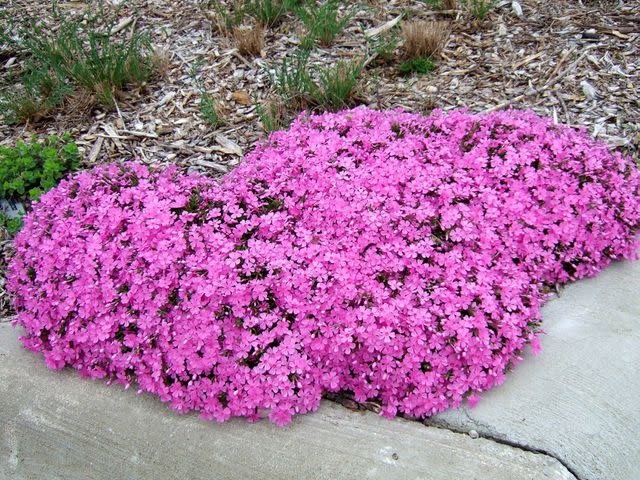
The jewel-like flowers of moss phlox (Phlox subulata) open early in spring, often appearing alongside daffodils and tulips. This hardy perennial groundcover is an excellent candidate for rock gardens or slopes. Colors include violet, pink, white, blue, and bicolors. The plants are also deer resistant.
Growing Conditions: Full sun and well-drained soil
Size: Up to 10 inches tall
Zones: 3-9
For more Better Homes & Gardens news, make sure to sign up for our newsletter!
Read the original article on Better Homes & Gardens.

